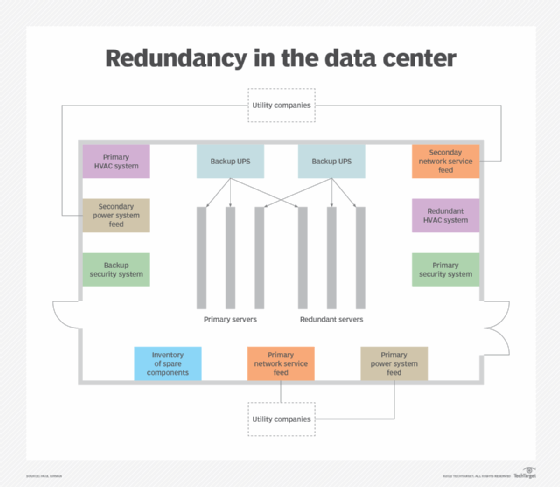What Happens to Redundancy If Company Goes Bust? A Guide to Your Rights
What Happens to Redundancy If Company Goes Bust? A Guide to Your Rights
Blog Article
Investigating the Interaction Between Firm Redundancy and Organizational Flexibility for Future Growth
In the dynamic landscape of today's organization world, the complex partnership between company redundancy and organizational versatility arises as a crucial element for sustained development and success. Firms frequently deal with the difficulty of striking a fragile equilibrium in between preserving a degree of redundancy to alleviate threats and cultivating flexibility to react swiftly to the ever-evolving market demands.
Significance of Company Redundancy
Company redundancy is a critical element that boosts business strength and minimizes functional threats. By including redundancy procedures within the business structure, firms can much better stand up to unpredicted disturbances and changes in business atmosphere. Redundancy acts as a calculated buffer, enabling business to adapt and react properly to unforeseen difficulties without compromising vital operations.
One key aspect of the relevance of business redundancy is its function in ensuring connection throughout times of situation. When encountered with unexpected changes or emergency situations, repetitive systems, resources, or employees can tip in to maintain crucial functions and prevent prevalent interruptions. This connection not only safeguards the company's online reputation and client trust but additionally decreases monetary losses and operational downtime.

Methods for Business Versatility

An additional critical method is spending in technology and framework that can sustain adaptability and scalability. Implementing digital tools, automation, and data analytics can streamline operations, improve efficiency, and offer beneficial understandings for notified decision-making. Furthermore, developing versatile organizational structures that permit quick adjustments to market characteristics and customer requirements is necessary for remaining competitive in a rapidly advancing environment. By proactively recognizing possible disruptions and opportunities, organizations can proactively thrive and adjust in an ever-changing service landscape.
Balancing Redundancy and Adaptability
Achieving an unified stability between operational redundancy and business flexibility is critical in browsing the intricacies of a dynamic company setting. Striking the right balance in between redundancy and flexibility is a delicate process that needs a deep understanding of the company's objectives, sector dynamics, and danger resistance.
To achieve this balance, companies need to conduct regular assessments of their procedures to recognize locations where redundancy is needed for danger reduction and where adaptability can drive development and growth. Executing flexible structures, fostering a society of continual understanding and enhancement, and motivating open communication across all degrees of the company are crucial methods to balance redundancy and adaptability effectively. By straightening these 2 important aspects, business can position themselves for lasting development and success in an ever-changing company landscape.
Study on Adaptation Success
In examining circumstances of successful organizational adjustment, it becomes evident that the interaction between functional redundancy and versatility is a defining variable in forming resilient organizations. One compelling study is that of Netflix. Originally a DVD rental solution, Netflix showed remarkable flexibility by transitioning into find this a streaming system when digitalization interrupted the sector. By tactically purchasing modern technology and content production, Netflix not only endured however flourished in a quickly evolving market. An additional standout example is Amazon. Beginning as an online bookstore, Amazon continually adapted its service model, broadening right into diverse markets such as cloud computing and expert system. This flexibility enabled Amazon to remain ahead of rivals and fulfill changing customer needs. Lastly, Adobe supplies a significant illustration of effective adjustment. The company shifted from selling software application licenses to a subscription-based version, ensuring repeating profits streams and boosted customer interaction. These instance researches underscore the importance of operational redundancy paired with business adaptability in fostering long-lasting development and competition.
Building Resilience for Future Development
Building durability for future development requires a strategic positioning of operational procedures with market dynamics and arising trends. Business must adjust to changing atmospheres by fostering a culture of adaptability, development, and continual enhancement.
In addition, promoting solid relationships with stakeholders, such as consumers, employees, vendors, and the community, is necessary for maintaining and weathering unpredictabilities trust and support throughout turbulent times. Efficient interaction and openness play an important function in structure resilience, as they assist facilitate and line up assumptions cooperation in navigating uncertainties.
Moreover, companies require to prioritize knowing and advancement efforts to upskill employees and equip them with the required devices to official site adjust to transforming circumstances. By purchasing their workforce, business can improve their versatility and dexterity, inevitably reinforcing their resilience for lasting future development.
Verdict

In the vibrant landscape of today's company globe, the intricate connection between business redundancy and organizational adaptability arises as a critical aspect for continual growth and success. Firms frequently face the challenge of striking a delicate balance between preserving a degree of redundancy to reduce threats and cultivating adaptability to respond quickly to the ever-evolving market needs.To achieve this balance, companies need to carry out routine analyses of their procedures to identify areas where redundancy is required for danger reduction and where flexibility can Continue drive innovation and growth.In final thought, the interplay between business redundancy and business adaptability is vital for future development. Structure strength via a mix of redundancy and flexibility will certainly ensure that companies are prepared for the challenges of the future.
Report this page